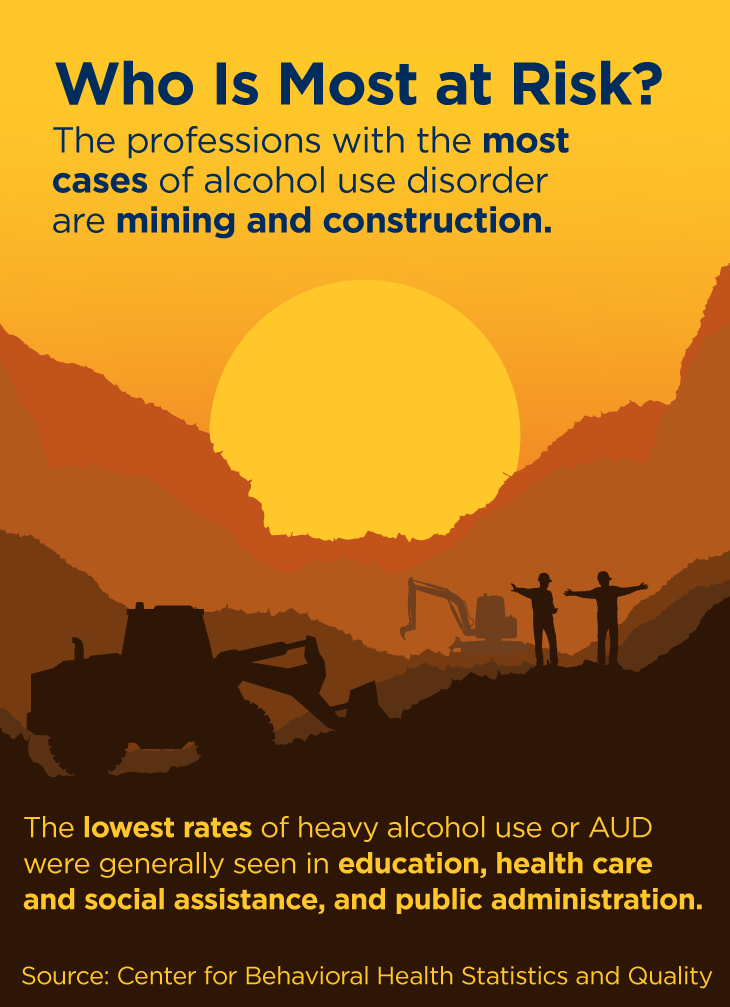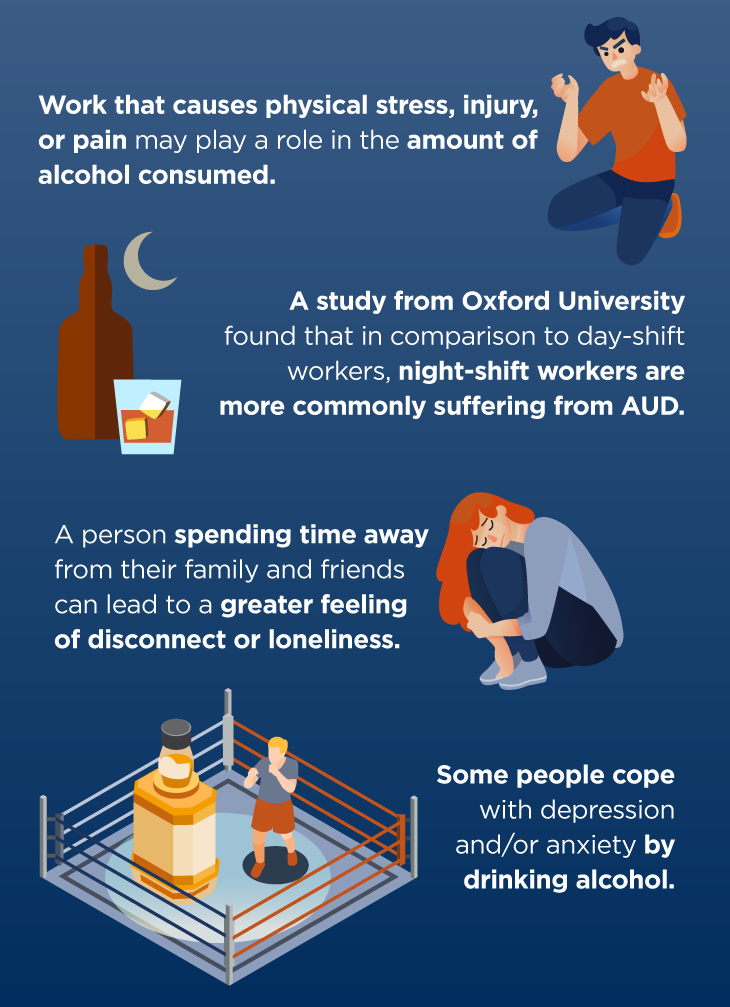Services
- Home
- Mental Health Services
- Who We Treat
- How We Treat
- Patients & Visitors
- About
close

Nightly, your spouse berates you for your drinking. She has left you multiple times and is threatening to do the same if you don’t get your drinking under control.
“Why is she acting like this?” It’s not like you don’t go to work every single day and bust your tail to provide for your family. “She must be crazy.” Or maybe, she is onto something.
This scene plays out in households all over the world because of a lack of awareness of what a person with high-functioning alcoholism (alcohol use disorder) looks like.
“She calls me an alcoholic, but I’m not spending every dollar I earn or begging for money to get more booze.” In all likelihood, your spouse is witnessing alcohol use disorder, a fresher term for alcoholism.
Alcohol use disorder (AUD) is the diagnosis one gets from a medical professional when someone is managing an alcohol addiction. AUD is classified as mild, moderate, or severe, and occurs when a person has compulsive alcohol misuse, loss of control over the amount of alcohol consumed, and suffers from withdrawals when alcohol isn’t available.

While alcohol is legal — and relatively safe when consumed in moderation by those looking to relax — drinking it may cause legal troubles, health issues, depression, anxiety, and/or relationship problems.
According to the National Institute on Alcohol Abuse and Addiction (NIAAA), 14.5 million Americans ages 12 and older lived with an AUD as of 2019 and 414,000 adolescents ages 12 to 17 had an AUD.
Alcohol addiction can be caused by many factors, but a common one is multiple binge-drinking episodes. While binge drinking is not a direct path to alcohol addiction, it does put a person at greater risk of developing an alcohol use disorder.
Determining the difference between alcohol addiction/misuse and social drinking isn’t always easy, because alcohol affects each person differently.
A good gauge is following medical professionals’ standards of how much alcohol is considered too much.

Again, alcohol affects everyone differently. Two beers in one sitting may make one person feel nothing, while others may feel “tipsy.”
However, the NIAAA, a division of the National Institutes of Health (NIH), describes more than seven drinks per week as heavy drinking for a woman. It also describes more than 15 drinks per week as heavy drinking for a man.
One drink is defined by the Centers for Disease Control and Prevention (CDC) as:

While only a professional can determine whether someone has an AUD, there are signs that you can look for as outlined below.
Alcohol use disorder covers a broad spectrum, but in general, a person living with AUD is facing any mix of the following consequences of drinking too much:

Alcohol use disorder paints a picture in the minds of many people because of the stigma (negative and often unfair belief) that has been tied to it.
In general, a person will describe someone that is managing alcohol addiction as a person that is down on their luck, broke, and typically jobless. This image that is conjured in the minds of most is flat wrong and has led to many professionals and “high-functioning” people with alcohol use disorder going unnoticed.
A person with functioning alcohol use disorder is defined by the NIH as “typically middle-aged, well-educated, with stable jobs and families.”
People with functioning alcohol use disorder make up around 20% of all people with alcohol use disorder in the United States. In total, 18 million Americans live with AUD.
Around 25% of the 20% that are living with functional alcohol use disorder have faced at least one major depressive episode in their life. One-third have a multi-generational history of AUD.
Do not be mistaken in thinking functioning alcohol use disorder is safer than being in the general population of those with an AUD.

According to the Center for Behavioral Health Statistics and Quality report on Substance Use and Substance Use Disorder by Industry put out by the Substance Abuse and Mental Health Services Administration (SAMHSA) in 2015, the professions with the most cases of alcohol use disorder are mining and construction.
The lowest rates of heavy alcohol use or AUD were generally seen in education, health care and social assistance, and public administration.
Possible reasons for these high or low ranks range from alcohol access to work hours.

While this is not a firm fact as to the amount of life that is taken away from each person who drinks too much alcohol, a 2014 study in Denmark found that a person who faced hospitalization due to alcohol use disorder lived an average of 24-28 fewer years than the general population.
The exact age for men was 47-53 and the exact age for women was 50-58 at the time of death.
Losing years off of your life is not the only danger of living with and not treating an alcohol use disorder.

The CDC lists the dangers in both the short term and the long term on their website.
Among the short-term dangers are:

Among the long-term health risks are:

Living with an AUD and not seeking medical treatment is a dangerous game to play, as we just discussed.
However, regardless of the length of your substance use disorder or how severe it is, there is hope you can make a change and extend your life for many years to come.
Depending on how impactful your alcohol use disorder is, there are inpatient and outpatient options available to overcome and work towards recovery
In most cases, detoxing with the help of medical professionals is necessary to begin the journey to recovery.
During the detox period, you will battle withdrawal symptoms that can range from mild to severe, but you’ll have the help of medical professionals around you.
Withdrawal symptoms may include:
After a detox period that usually lasts from 7-10 days, a person will need to move into outpatient or inpatient treatment.
Our treatment includes a mixture of evidence-based methods (counseling, group therapy, family therapy, and more) and alternative approaches (meditation, activity-based treatment, and more). We know not every patient has the same needs for their healing journey, which is why we offer options to help our patients reach their recovery goals.
SUN Behavioral Health in Houston offers inpatient and outpatient alcohol addiction detox and treatment options.
If you or a loved one is in need of treatment or simply has questions about what treatment at our facility may look like, call us at 713-714-2287.
According to the Center for Behavioral Health Statistics and Quality report on Substance Use and Substance Use Disorder by Industry put out by SAMHSA in 2015, the professions with the most cases of alcohol use disorder are mining and construction.
Alcohol use disorder covers a broad spectrum, but in general, a person living with an AUD is experiencing withdrawal symptoms, their finances or careers being impacted by alcohol consumption, a lack of control when it comes to drinking, or even lying to themselves about how often they drink.
The National Institute on Alcohol Abuse and Alcoholism, a division of the National Institutes of Health, describes more than seven drinks per week as heavy drinking for a woman. It also describes more than 15 drinks per week as heavy drinking for a man. These numbers do not tell the entire story, however, as alcohol affects each person differently.
Contact a medical professional to discuss your concerns if you believe you have an AUD.
While this is not a firm fact, a 2014 study in Denmark found that a person that faced hospitalization due to alcohol use disorder lived an average of 24-28 fewer years than the general population. The exact age for men was 47-53 and the exact age for women was 50-58 at the time of death